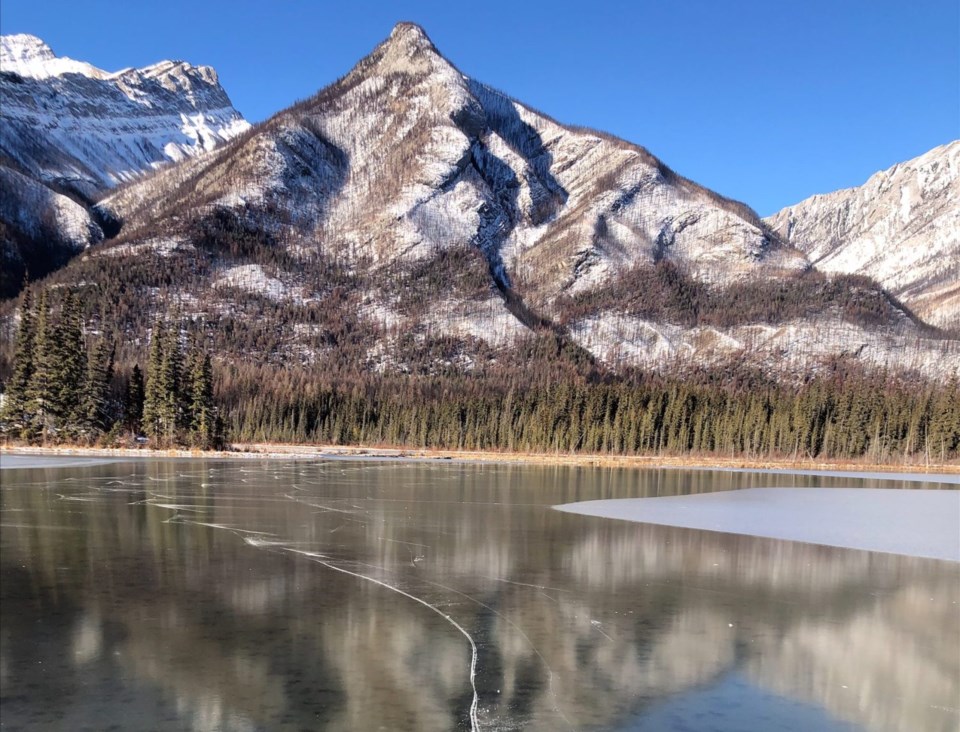As temperatures have been mild but variable lately, it is important to be cautious before attempting to step out onto the frozen surface of any waterbody.
“It's a wonderful activity to engage in and Jasper has a lot of really special spots to enjoy wild skating or skating on the natural ponds,” said Dave Argument, resource conservation manager with Jasper National Park.
“But thin ice is certainly a risk.”
Places where water is moving under the ice or areas close to beaver lodges are especially high-risk spots. Even if you have measured the ice nearby, these patches can be dramatically thinner and therefore much more dangerous in those locations. Even the most astute recreationists can find themselves at hazard in such situations.
“That movement of the water can actually cause the ice to thin,” Argument said. “I have gone through the ice near beaver lodges in the past because of that situation.”
Parks Canada recommended that the minimum safe thickness is 15 to 20 centimeters for a solo skater, although it is not recommended to go out on the ice by yourself because of the risks involved. Going with a friend also has the benefit of sharing an enjoyable moment at a special time of the year.
As the number of participants increases, that number needs to be thicker correspondingly.
To determine ice thickness, many people use an ice screw, which is an excellent tool for quickly doing the job, Argument said.
Jeff Wilson brings a drill, or at least he did up until last weekend. A member of the Facebook group called the Jasper Wild Ice Skaters, Wilson said that Saturday was the “last stellar day” for pond skating because of the precipitation that has already come through town this week.
“We just spent five hours on the most incredible ice you have ever seen anywhere,” he said. “The wild skating season is very short. If we get cold weather and no snow, it's really good ice early. If we get cold weather, which develops some ice and then some snow, which is what we had this year, and then it just develops on top of that, it becomes the pits.”
Parks Canada does maintain a professional visitors safety team that practices rescuing people from all manner of precarious situations. Every year, they respond to one or two callouts for rescue.
Argument encouraged everyone to do everything they can to avoid getting into those situations in the first place. A dunk in icy water – especially moving icy water – is no one’s idea of a good time. He said that there have been recent reports of people walking across the ice on the Athabasca River.
“That is a high-risk activity,” he said. “I recommend people stay off the ice on the river where there's moving water underneath and then the same goes for the Maligne Canyon. I understand completely why that’s such a popular activity. It's a beautiful spot. The Maligne Canyon in the winter is a magical experience, but it also comes with associated hazards.”
He recommended going there with an experienced and licensed guide. Otherwise, he recommended taking the appropriate precautions, using the right equipment, and making sure that you tell somebody about your plans.




